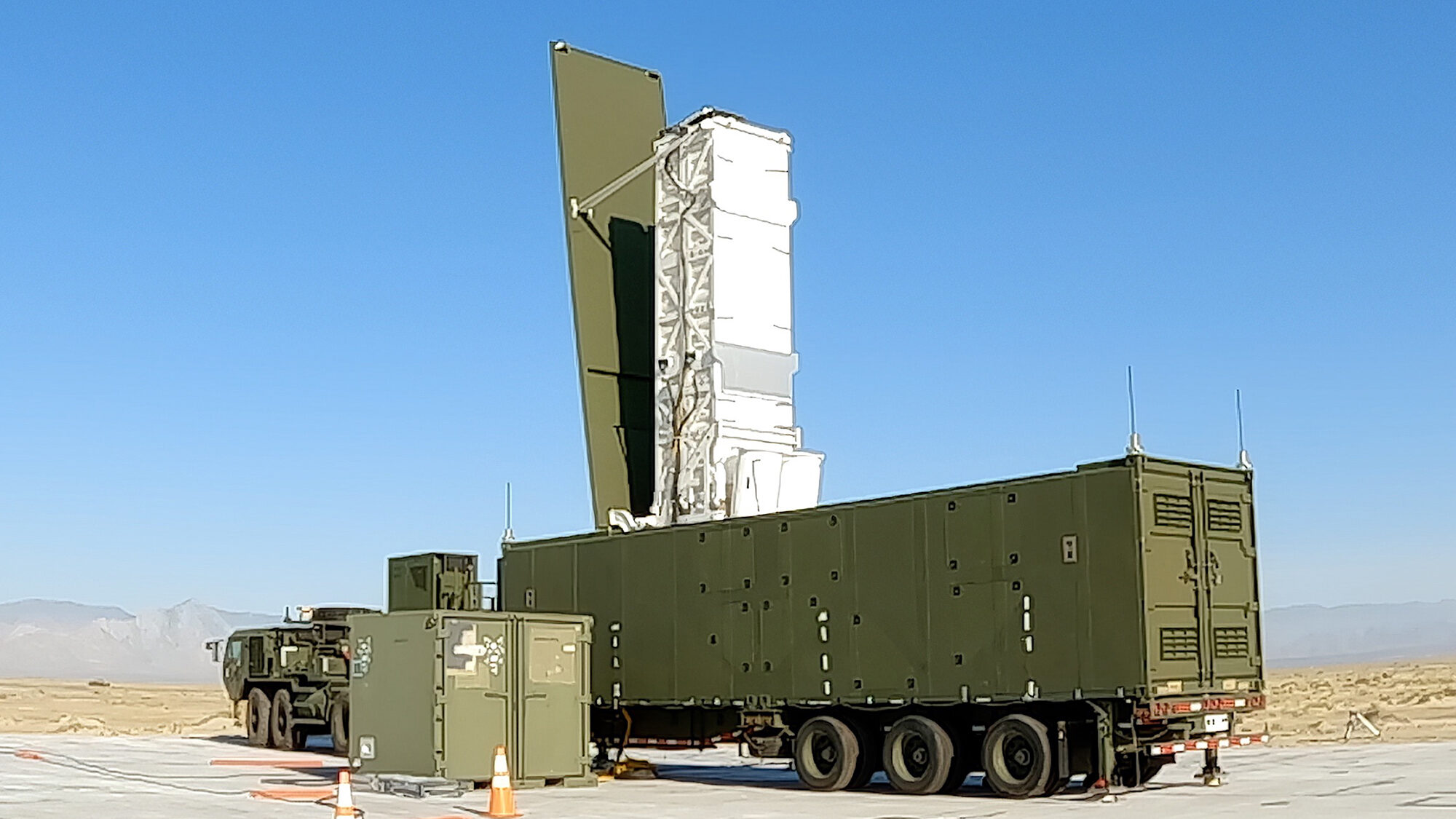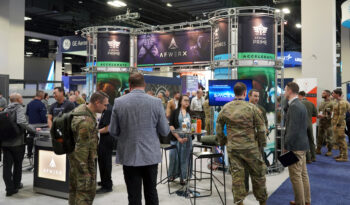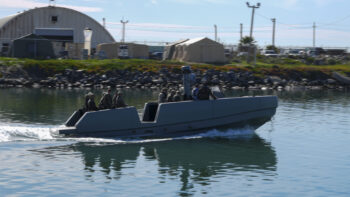
In June, the Army’s RCCTO Mid-Range Capability Project Office launched a Tomahawk missile from the Army’s Mid-Range Capability prototype system. (US Army)
SMD SYMPOSIUM — The Army’s new Rapid Capabilities and Critical Technologies Office (RCCTO) is closing in on the initial fielding of two new missile systems while preparing to pass the development and sustainment baton to the Program Executive Office (PEO) for Missiles and Space, according to a three-star general.
Lt. Gen. Robert Rasch, who heads up the RCCTO, told an audience in Huntsville, Ala. on Wednesday that while Long-Range Hypersonic Weapon (LRHW) and Mid-Range Capabilities (MRC) weapon development is continuing, his office’s role for those programs is about to sunset.
“We’re birthing [LRHW] in RCCTO but for the long-term, for the second battery and the third battery, the sustainment, and the design improvements over time, those will happen on [the head of PEO Missile and Space’s Brig. Gen. Frank Lozano’s] watch,” Rasch said. “A lot of our workforce is working on that [and] will be part of that team moving forward.”
The services have been working on their respective hypersonic variants for several years and the Army anticipates fielding the first battery of its LRHW later this year.
That Army land-based truck system is designed to launch rounds that can travel “well over” 3,800 miles-per-hour and hit targets within a 1,725 mile range, according to a March Congressional Research Services report.
Service leaders plan to field the first battery to soldiers within the 5th Battalion, 3rd Field Artillery Regiment at Joint Base Lewis-McChord in Wash. later this year. However, the program has struggled with test delays, including several in 2022 and the Army and Navy scrubbing a test in March due to a battery failure during a pre-launch check.
Rasch said both services and the industry team are eager to “get back out to prove this capability” but did not discuss the sticking points for making that happen or when that next test might occur.
“We’re not opening up on the champagne bottle right here on the stage but we’re going to get there,” he said, later adding “Once we…complete that end-to-end testing, and we have confidence in the design there, are missiles lined up in various stages of production ready to finish buttoning up and get those out to the field.”
After Rasch is able to pop open that bubbly bottle and hand LRHW responsibility over to Lozano’s team, he said there is already a “well defined plan” in pace to continue upgrading the weapon through second, third and fourth iterations.
Meanwhile, Rasch’s team at the RCCTO is wrapping up work on the new MRC system, also known as Typhon, that leverages Raytheon’s existing SM-6 missiles and Tomahawk cruise missiles and launches them for the ground. The MRC provides a land-based, ground-launched system with a range between the Army’s Precision Strike Missile, which can hit targets at a distance greater than 310 miles, and the LRHW’s reach.
In late 2022, the service accepted the first prototype delivery. This June soldiers from 1st Multi-Domain Task Force, and the Navy Program Executive Office Unmanned Aviation and Strike Weapons, “successfully demonstrated” the launch of a Tomahawk missile from the Army’s MRC system, PEO Missiles and Space wrote at the time.
“Soldiers assigned to 1st Multi-Domain Task Force conducted this live-fire event in which successful communications from the battery operations center to the launcher resulted in the launch of a Tomahawk missile,” the Army office added. “This test follows the successful launch of an SM-6 missile from the Mid-Range Capability system earlier this year, confirming the full operational capability of the system.”
Rasch said his team anticipates having the first battery fielded by the end of this year and it’s now down to “coordinating the delivery of those already built missiles” and having the proper certification processes in place. Once hose MDTF soldiers are fully trained and the first battalion is deemed operational, Rasch will similarity turn the program over to the PEO Missiles and Space shop to manage subsequent fielding activities, weapon upgrades and sustainment activities.






















